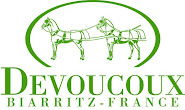
Q. What made you want to become a vet?
A. So many things involved. The main thing was a love for animals and nature in general. We always had animals at home in Belgium. I preferred the animal side to the human side. Something incredibly popular when I was teenager were the books by James Harriot, All Creatures Great and Small. My generation was influenced by those books and the wonderful BBC series. It certainly provided a strong background to persevere with one’s choice if one was so inclined. The other thing was how did you end up working with horses and that in itself was almost process of elimination. Once you get into vet school, in my time, it becomes clear that my female colleagues aspired to the small animal side and my male colleagues were more inclined towards the large animal side. I was always interested in surgery and though surgery for cattle is well developed, economically it’s less and less viable and
realistic. Surgery in horses is much more advanced and sophisticated. So you kind of drift into horses if you’re interested in surgery. Small animal surgery is a lot more sophisticated and advanced but horses are defining species for large animal procedures.
Q. Why did you decide to specialize in Equine Orthopedics?
A. That probably had to do with mentorship. My mentor was one of the pioneers of equine radiology at vet school in Europe. It’s something I hold dear. I was doing a lot of colic surgery and soft tissue surgery. As you move through your career it’s about finding a niche without even looking for it. When you work with competition horses the problem you will find is lameness. Inevitably you’re spending your time doing that and you want to get better at it.
Q. How did it come about that you went to Hong Kong in 2008?
A. When I was a resident at the Royal Veterinarian College in London a friend of mine was doing his PhD in fractures, etc. He became the Veterinary Services Manager for the Hong Kong Jockey Club. That was Dr. Riggs. [Before the Olympics ] it became clear it would not be practical to bring horses into China. Until Hong Kong stepped up they almost gave up on the Equine Olympics. Then Hong Kong stepped up with ability to deal with importing and quarantine and deal with infectious diseases. They held the Equine Olympics there because of the association with international racing for hundreds of years. The Hong Kong Jockey Club used to be British. Because of the British tradition in racing they are well equipped to deal with imports and exports of high performance horses. Dr. Riggs was approached to be the Veterinary Service Manager for the Olympics. He put together a team of international experts to provide on-site vet care. So that team was not associated with any national teams but with the FEI Team of Treating Veterinarians. Australia, USA, UK, Germany, China were all involved. There were about fifteen of us. I was invited as one of those fifteen. Three were board certified surgeons, of which I was one as well. There were also three board certified internal medicine specialists. There was also a whole team of vets dealing with doping control, quarantine and those kinds of things. They were separate from us.

Hong Kong Billboard for the Olympics
photo by Bibash Chaudhuri
Q. How long were you there?
A. For somewhere between 5 and 6 weeks. We had to be there before the first horse arrived by air convoy. And because we had to be there when the horses arrived and accompany them by convoy to the venue. We stayed until the last horse went home. With the exception of a few horses from Australia that had additional quarantine regulations.
Q. Where did you live while you were there?
A. We lived in an FEI hotel by the Hong Kong Jockey Club Sha Tin Race Course. They had built the venue there for dressage and show jumping and there were two hotels close by for competitors and stewards. There was another venue at Beas River Country Club for cross-country. All the event horses had to travel there in convoy and back. There were complicated logistics involved with that. All the horses had to be there at the same time and then come back after cross-country. The convoy consisted of, if I remember correctly, 12 transport vans, which was enough to take 2/3 of the horses. So it had to go twice to take them out there and bring them back.
Q. What did your days look like while you were there?
A. They had a pretty organized system. Dr. Riggs was the Service Manager and had a roster together for us. At any given time there were four different slots to fill. So there was one team of two for flight duty. They would travel to the airport and back with the horses. One vet was on emergency clinical cover 24 hours around the clock. Then there was the routine clinic cover and the clinic reception and office as well as being available for specific team veterinarians. Then there was the surgery and medical cover from 7am to 8pm. There were two surgery vets and two internal vets. So there were five slots to fill with one or two people in each. There was a rotation drawn up between those different things.
In addition to that, whenever competition necessitated, we had two vets ringside and one vet with the ambulance. During cross-country we all went to the venue. We arrived at 4am and manned all the stations and made sure radio contact was provided. There were different stations out on course, in the stables, the ten-minute box and the finish lines. You know how it goes. We stayed out there and the first half came back with the first convoy and the second came back with second convoy.
Q. What kinds of issues did you see while there?
Find out what kinds of veterinary issues Dr. Schramme saw while at the 2008 Olympics in the next post......









No comments:
Post a Comment